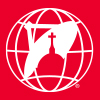The solemnity of the Corpus Christi was established by Pope Urban IV more than 700 years ago and is celebrated every year by the Church.
FIND THE POPE'S BIOGRAPHY HERE
As every year, the Church celebrates the Feast of Corpus Christi — the Body of Christ. A solemnity established by Pope Urban IV more than 700 years ago.
It all began in the 13th century when a priest, tormented by his doubts about the real presence of Christ in the Eucharist, decided to make a pilgrimage to Rome to pray at the tombs of the Apostles Peter and Paul.
On his return journey, the priest wanted to stop in a small town in central Italy called Bolsena.
While celebrating Mass in the church dedicated to Saint Catherine, something extraordinary happened. At the moment of the consecration, while raising the host over the chalice, he saw that the particle began to bleed. The blood began to fall on the corporal and on the other linen cloths on the altar.
Frightened, the priest didn't have the courage to go on and hastily took the host, the chalice, the corporal, and all the other objects that had been stained by the blood, and ran to the sacristy, placing everything inside the tabernacle.
It was only later that the priest decided to tell the pontiff, who was in the nearby city of Orvieto at the time.
Pope Urban IV ordered the bishop of Orvieto to bring him the corporal on which the drops of Christ's blood had fallen. The bishop, obeying the pope, went to Bolsena, took the corporal, and, accompanied by a crowd of people, brought the proof of the miracle to the bridge over the Rivo Chiaro River, where the pope was waiting for him together with cardinals, clerics, religious, and all the people of Orvieto.
After these events, on August 11th, 1264, Pope Urban IV, with the bull Transiturus de hoc mundo, established the Feast of Corpus Christi for all of Christendom, setting the day of its celebration on the Thursday of the octave of Pentecost.
In the bull instituting the Feast of Corpus Christi, the pope also wanted to address Saint Juliana of Mont Cornillon, the mystic who for more than 20 years had visions connected with the birth of this feast: a full moon crossed by a band obscuring its center. In the interpretation given by the mystic herself, the moon disc represents the militant Church; the bandage that partly hides it means that a feast is missing. God wants its creation: the Feast of the very august and very sacred Sacrament of the Altar.
This memory is still preserved today in the majestic Duomo of Orvieto, where the corporal of the so-called Miracle of Bolsena is exposed on the day of the solemnity of Corpus Christi, or Corpus Domini.
SIGN UP FOR OUR NEWSLETTER HERE







